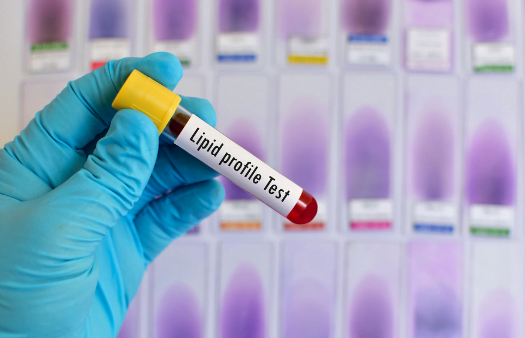Lipid Profiling in Veterinary Pathology
Lipid profiling in veterinary pathology is a critical diagnostic tool used to evaluate and monitor cardiovascular health in animals. This comprehensive service involves the analysis of lipid components, such as cholesterol and triglycerides, which are essential for cellular function but can become harmful when present in excessive amounts or in an abnormal form.
The importance of lipid profiling extends beyond mere quantification; it also allows veterinarians to assess the risk factors associated with cardiovascular diseases. By identifying these risks early on, clinicians can implement preventive measures and treatment plans that improve patient outcomes. This service is particularly valuable for companion animals like dogs and cats where obesity, diet, and genetics play significant roles in determining lipid levels.
Accurate lipid profiling requires precise sample preparation techniques to avoid contamination or degradation of lipids. Specimen collection methods must be standardized to ensure consistency across samples. Once collected, the specimens are analyzed using advanced analytical instruments that can differentiate between various types of cholesterol (HDL, LDL, VLDL) and triglycerides.
The use of high-performance liquid chromatography (HPLC), nuclear magnetic resonance spectroscopy (NMR), and mass spectrometry provides detailed insights into lipid profiles. These technologies enable the detection of subtle changes in lipoprotein subfractions that may not be apparent through simpler methods. The results are then interpreted according to internationally recognized standards such as ISO 15189 for quality management systems in medical laboratories.
This service is crucial for diagnosing and managing conditions like atherosclerosis, hyperlipidemia, and dyslipoproteinemia. It helps veterinarians tailor therapeutic interventions based on specific lipid patterns observed in the patient. For instance, dogs with elevated LDL cholesterol levels might benefit from dietary changes or statin therapy, while those exhibiting signs of hypolipoproteinemia may require supplementation.
| Lipid Component | Description | Units |
|---|---|---|
| Total Cholesterol | Sum of all lipid components in the blood. | mg/dL or mmol/L |
| HDL Cholesterol (Good Cholesterol) | Lipid component that helps eliminate excess cholesterol from the body. | mg/dL or mmol/L |
| LDL Cholesterol (Bad Cholesterol) | Lipid component associated with increased risk of cardiovascular disease. | mg/dL or mmol/L |
| VLDL Cholesterol | Very low-density lipoprotein responsible for transporting triglycerides. | mg/dL or mmol/L |
| Triglycerides | Fatty acid esters of glycerol, indicating energy storage and metabolism. | mg/dL or mmol/L |
The interpretation of these parameters is essential for accurate diagnosis and effective treatment planning. Veterinarians often compare current lipid levels with baseline values obtained during initial assessments to track improvements over time.
Why It Matters
Lipid profiling plays a pivotal role in the early detection of cardiovascular diseases, which are increasingly prevalent among pets due to lifestyle factors such as sedentary behavior and poor dietary choices. By providing detailed lipid profiles, this service aids veterinarians in making informed decisions about patient care.
Understanding the significance of each lipid component helps prevent severe health complications that could otherwise lead to costly surgeries or prolonged hospitalizations. Early intervention through lifestyle modifications and targeted medications can significantly enhance an animal's quality of life.
Industry Applications
- Evaluating cardiovascular risk in geriatric pet populations.
- Monitoring the effectiveness of lipid-lowering therapies.
- Detecting underlying metabolic disorders that affect lipid metabolism.
- Assisting in breeding programs by ensuring offspring inherit favorable lipid profiles.
| Lipid Component | Recommended Range (mg/dL) |
|---|---|
| Total Cholesterol | <200 | HDL Cholesterol | >50 |





